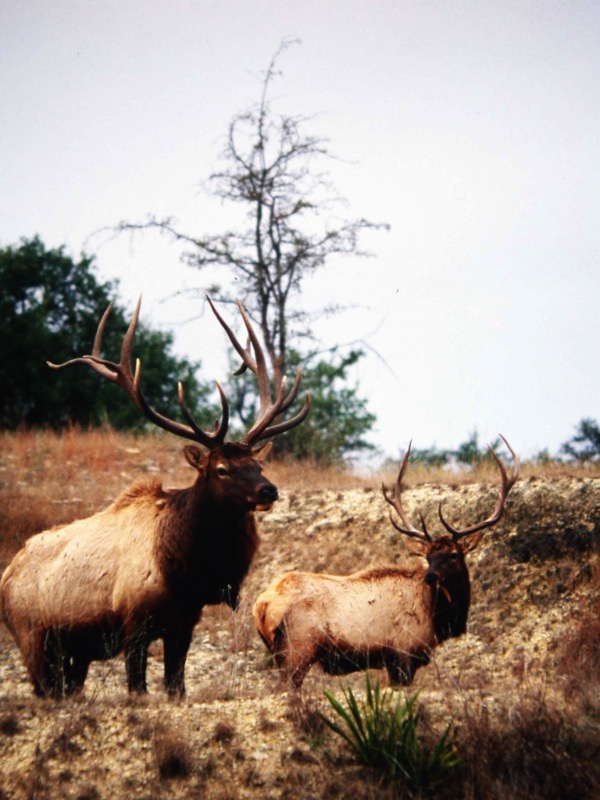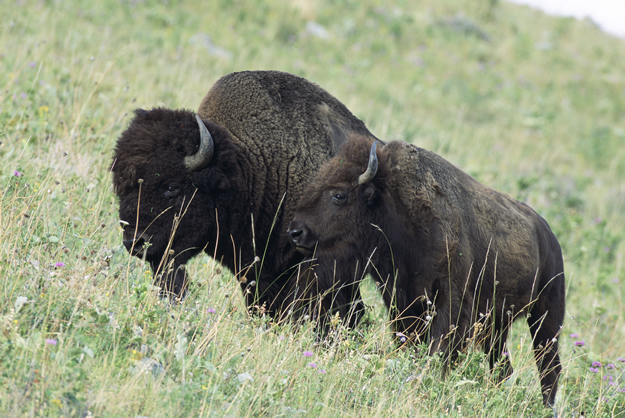
Editor’s Note: Jim Stephan of Cody, Wyoming has been a member of the Mossy Oak Pro Staff for the last 10 years. He moved to Cody, because of the tremendous hunting opportunities the area provides. According to Stephan, “The biggest advantage of living in Cody is that you can hunt some kind of critter there 12 months of the year. I hunt antelope in September. As winter comes on, I hunt elk, deer and bear. In the spring, I hunt ducks, turkeys and predators. So, if you love to hunt, find a job in Cody, Wyoming.”
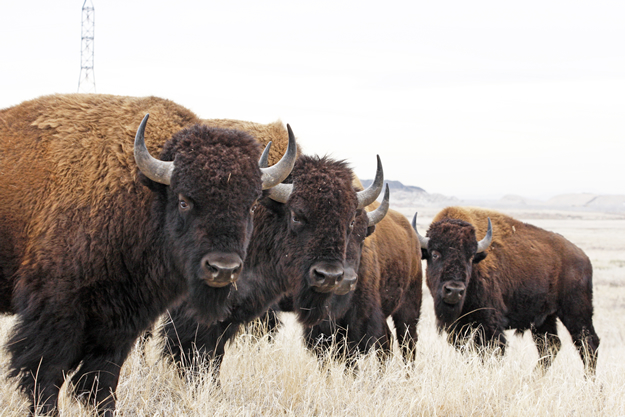 Hunting American bison in a fair-chase situation always has been on my bucket list. I grew up in Michigan. Of course, we didn’t have any bison there to hunt. When I got the opportunity to move to Wyoming, I began to see all the different types of animals that lived there. Then, I learned that I could apply for a buffalo tag and actually get to hunt one of these critters. In my opinion, the buffalo (American bison) is the most-majestic animal in our country. Because of an extensive conservation program, the population of buffalo has increased to the point that we now have an opportunity to hunt these free-ranging animals. Another reason I wanted to hunt the buffalo is that they’re really-big animals that can provide a lot of meat for our freezer.
Hunting American bison in a fair-chase situation always has been on my bucket list. I grew up in Michigan. Of course, we didn’t have any bison there to hunt. When I got the opportunity to move to Wyoming, I began to see all the different types of animals that lived there. Then, I learned that I could apply for a buffalo tag and actually get to hunt one of these critters. In my opinion, the buffalo (American bison) is the most-majestic animal in our country. Because of an extensive conservation program, the population of buffalo has increased to the point that we now have an opportunity to hunt these free-ranging animals. Another reason I wanted to hunt the buffalo is that they’re really-big animals that can provide a lot of meat for our freezer.
I applied for a buffalo cow tag here in Wyoming, even though I knew that the odds for drawing this tag was somewhere between slim and not at all. The year I took the buffalo only 280 cow tags were available for the draw, and 976 hunters put in for those tags. I was one of the lucky ones drawn to get a tag.
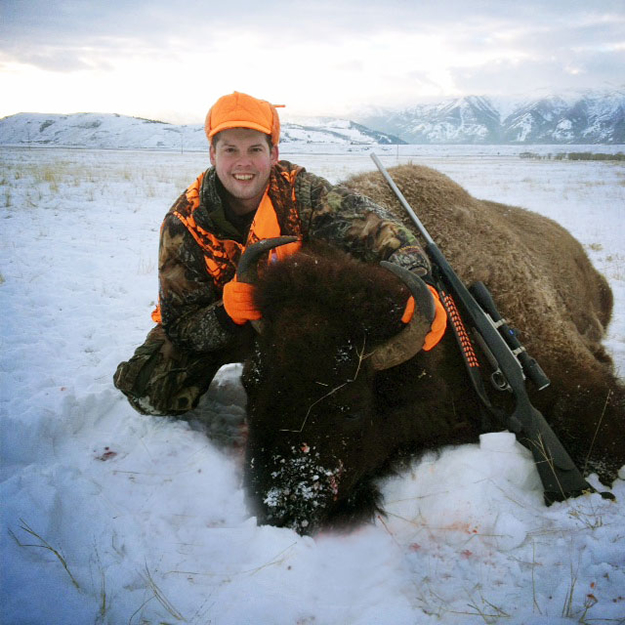 Several places in Wyoming have free-range buffalo. There's a good population of buffalo in the Black Hills of South Dakota that make their way into Wyoming, and numbers of buffalo around Gillette, Wyoming. However, the giant herd is near Cody, located 35 minutes from Yellowstone National Park, and the buffalo wander off the park. This herd is one where biologists really need to control the number of animals in the herd. In the winter months, when buffalo migrate out of the park, they often get in close proximity to rancher’s cattle, and there's a concern about the buffalo exposing livestock to brucellosis, creating a major issue between the ranching community and the wildlife community.
Several places in Wyoming have free-range buffalo. There's a good population of buffalo in the Black Hills of South Dakota that make their way into Wyoming, and numbers of buffalo around Gillette, Wyoming. However, the giant herd is near Cody, located 35 minutes from Yellowstone National Park, and the buffalo wander off the park. This herd is one where biologists really need to control the number of animals in the herd. In the winter months, when buffalo migrate out of the park, they often get in close proximity to rancher’s cattle, and there's a concern about the buffalo exposing livestock to brucellosis, creating a major issue between the ranching community and the wildlife community.
Drawing a bull buffalo tag is a once-in-a-lifetime hunt, because these tags are in such high demand. If a resident draws a cow buffalo tag, he or she can’t put in to hunt another cow buffalo for 7 years. The hunt’s primary purpose is to control the number of buffalo that come off Yellowstone onto private lands during the winter. When we get deep snow in Yellowstone National Park, the buffalo migrate to the south of the park into Jackson, Wyoming (often called Jackson Hole, Wyoming) onto the National Elk Refuge. The Game and Fish Department allows hunters to legally go on the National Elk Refuge and hunt buffalo. My favorite gun to take game in the West is a Remington Model 700 .30-06.
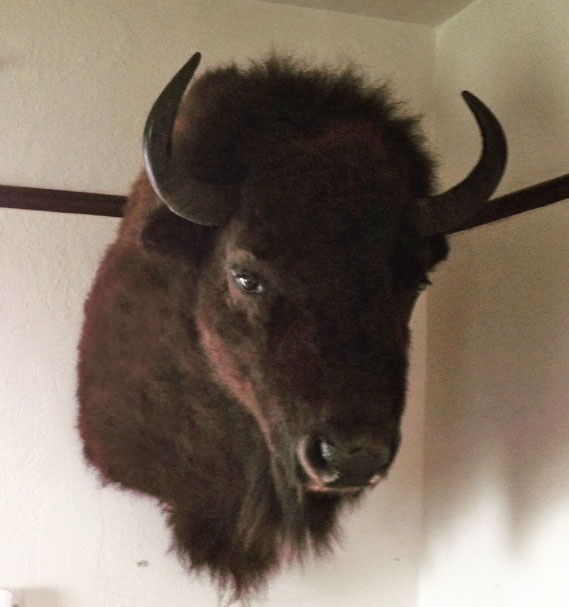 My hunt for buffalo was actually a two-trip hunt. I knew absolutely nothing about hunting buffalo. The buffalo season opened in September and ran through the first of the year. We had friends who lived down near where the buffalo showed up, and we got reports that some of the buffalo had already moved out of the park. A friend and I decided to go down and hunt during the first of September. However, when we arrived, we ran into a blizzard. Nineteen inches of snow fell the first night, and the next morning we woke up, and there was a total of about 28 inches of snow that had fallen in 2 days. The weather was miserable, and nothing was moving. We made the decision to drive back home before we couldn’t return home because of the snow. The locals at Jackson Hole told us, “This fluke winter snow storm is what the snow skiers pray for all year long.”
My hunt for buffalo was actually a two-trip hunt. I knew absolutely nothing about hunting buffalo. The buffalo season opened in September and ran through the first of the year. We had friends who lived down near where the buffalo showed up, and we got reports that some of the buffalo had already moved out of the park. A friend and I decided to go down and hunt during the first of September. However, when we arrived, we ran into a blizzard. Nineteen inches of snow fell the first night, and the next morning we woke up, and there was a total of about 28 inches of snow that had fallen in 2 days. The weather was miserable, and nothing was moving. We made the decision to drive back home before we couldn’t return home because of the snow. The locals at Jackson Hole told us, “This fluke winter snow storm is what the snow skiers pray for all year long.”
I stayed home until the week of Christmas, but I remained in contact with my friends in Jackson to learn when the buffalo moved into the Elk Refuge. Finally, during the week of Christmas, we got the call that about 10,000 head of buffalo were on the refuge. My fiancé was not really thrilled that I planned to leave home on Christmas Day to go hunt a buffalo. On Christmas Eve, I checked the weather forecast. The report was that a blizzard was supposed to hit on Christmas Day, and the weatherman was absolutely correct. I called my friend, who was going on the hunt with me, and said. “Let’s postpone our hunt for one more day.”
When we arrived at Jackson, there were blue skies and no clouds. All the mountain passes were opened and cleared. The first morning of our hunt we didn’t see any buffalo at all, and I was really disappointed. When we got our pass to be on the refuge, the officials said, “Oh, yeah, there's a big herd of buffalo just over the hill.” When we first arrived at the rifle area where we could hunt, we drove for about a mile before we spotted buffalo. But they were out in an open plain with no ditches, gullies or trees to hide us while we made a stalk. We came to a pull-off area where there was a little creek. I told my buddy, “If we just follow this creek back toward the buffalo, we should be able to get within 200 or 300 yards of the herd.” We followed the creek bottom to a ridge just above the herd. The first thing we realized was that we couldn’t tell the difference between a cow and bull, because they all have horns. When we finally identified two cows, we had another problem. All the buffalo were packed tight together in a herd.
Finally, we saw this tremendous-sized buffalo cow. She walked just a little away from the herd, presenting an open shot. I was looking through my riflescope preparing to take the shot, and my buddy was looking through his binoculars. I heard him say, “Don’t move.” As I peeped out of my scope, I saw this huge bull about 150 yards from us, looking straight at us, trying to get our wind. We realized they could be on us in about five seconds. When the bull looked away, my buddy said, “The next step that cow makes, take the shot.” Immediately, the cow took a step, and I took the shot. I made a perfect shot through the heart, and the cow went running back to the herd and fell. The other buffalo surrounded her and looked straight at us. We crawled down into the creek bottom, hurried back to the truck, drove back to the main road and saw that six bulls and cows still were standing with the cow I just had taken.
My buddy called the refuge manager and told him “We have taken our buffalo, but six other buffalo are around her, and we have less than an hour of daylight left before dark. What do you suggest we do?” The refuge manager replied, “If you have a plastic bag, wave it over your head, and the other buffalo will leave.” I knew that buffalo could be dangerous and waving a plastic bag over my head didn’t seem like a smart thing to do. About 20 minutes after we called the refuge manager, the other buffalo left. Then, we could go to my downed buffalo.
We had brought a sled to help us get the meat and head out. I'm a taxidermist, and I knew I was going to mount this buffalo’s head, so I caped it out. Next, we started skinning and field dressing the buffalo. The weather got so cold that we quartered up the buffalo, pulled it out with the sled, loaded it in the truck and headed home to finish the processing of the meat. From the time I squeezed the trigger until we finally put the meat in the back of the truck had taken 6 hours. We loaded up the last bit of meat at 10:00 pm.
To learn more about hunting, check out John E. Phillips’ new eBook, “Bowhunting Deer: Mossy Oaks Pros Know Bucks and Bows” – go to . You also can download a free Kindle app that enables you to read the book on your iPad, computer or SmartPhone.
For information on making jerky from your elk and other big game animals to provide a protein-rich snack, you can download a free book from http://johninthewild.com/free-books.
Tomorrow: Trophy Elk Without The Trophy














